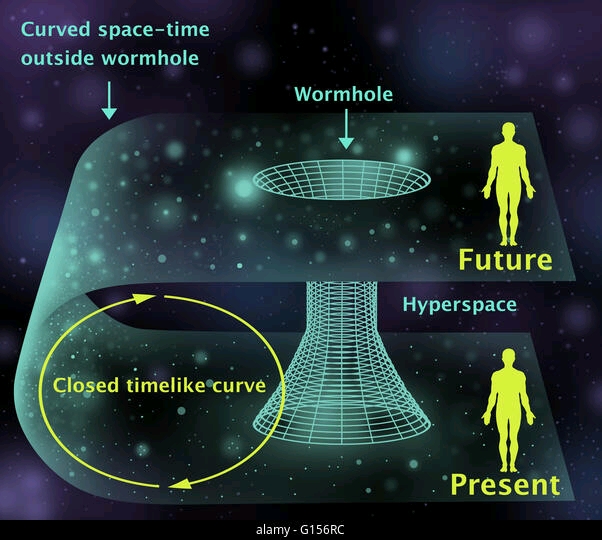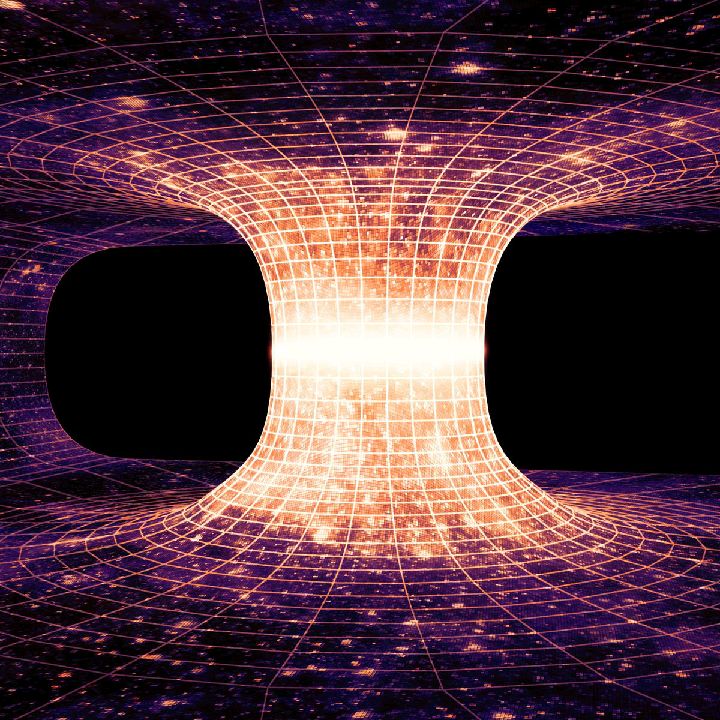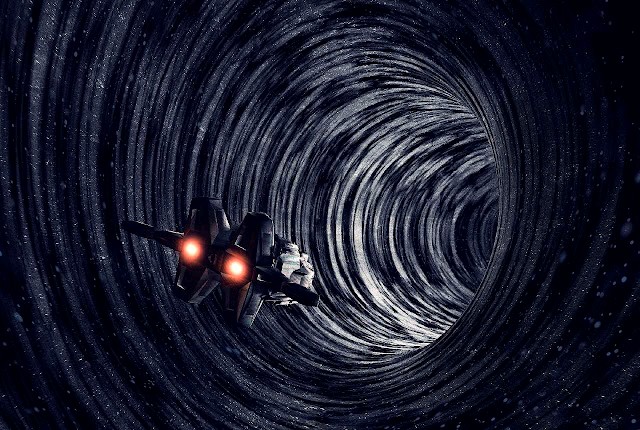WHAT DO YOU KNOW ABOUT WORMHOLE S
Ghana
1

A wormhole is a special solution to the equations describing Einstein's theory of general relativity that connects two distant points in space or time via a tunnel. Ideally, the length of this tunnel is shorter than the distance between those two points, making the wormhole a kind of shortcut. Though they are a staple of science fiction and have captured the popular imagination, wormholes are, as far as we know, only hypothetical. They are legitimate solutions to general relativity, but scientists have never figured out a way to maintain a stable wormhole in the real universe.

Who discovered wormholes?
The simplest possible wormhole solution was discovered by Albert Einstein and Nathan Rosen in 1935, which is why wormholes are sometimes called "Einstein-Rosen bridges." Einstein and Rosen started with the mathematical solution of a black hole, which consists of a singularity (a point of infinite density) and an event horizon (a region surrounding that singularity beyond which nothing can escape). According to The Physics of the Universe, they found that they could extend this solution to include the polar opposite of black holes: white holes.
These hypothetical white holes also contain a singularity, but they operate in reverse to a black hole: Nothing can enter the event horizon of a white hole, and any material inside the white hole gets ejected immediately.
Einstein and Rosen found that, theoretically, every black hole is paired with a white hole. Because the two holes would exist in separate places in space, a tunnel — a wormhole — would bridge the two ends.

What makes a wormhole traversable?
However, a wormhole created from a pair of black and white holes wouldn't be very useful. For one, white holes would be unstable. If you were to drop a particle toward the event horizon of a white hole, the particle would never reach the event horizon, because nothing can enter a white hole. So the energy of the system would continue to increase to infinity, eventually blowing up the white hole, according to the University of Colorado physicist Andrew Hamilton.
Second, even if white holes could exist, the only way to enter this kind of wormhole would be to cross the event horizon of the black hole on the other side. But once an object crossed the event horizon, it could never leave. So objects could enter the wormhole but never escape.
Lastly, the wormholes themselves would be unstable. A single photon, or particle of light, passing through the wormhole tunnel would introduce so much energy to the system that the tunnel would snap apart, destroying the wormhole, according to the European Southern Observatory.
In the 1970s, however, physicists worked out the math needed to make a stable, or "traversable," wormhole, according to University of California, Santa Barbara physicist Diandian Wang. The trick is to move the entrance of the wormhole tunnel beyond the event horizon of the black hole and to stabilize the tunnel itself so that matter passing through doesn't cause immediate catastrophic collapse.
The key ingredient for stabilizing wormholes is so-called exotic matter, or some form of matter that has negative mass. Unfortunately for such wormholes, scientists have never found evidence for negative mass, and it would violate conservation of momentum, which states that the momentum should remain constant if no force is applied; a negative-mass object placed next to a positive-mass object would immediately accelerate, with no source of energy.
What do wormholes look like?
If such a wormhole did exist, it would look very strange. The entrance would be a sphere, like the surface of a planet. If you looked into it, you would see light coming in from the other side. The wormhole tunnel could be any length, and while traveling down the tunnel, you would see distorted views of the region of the universe you came from and the region you were traveling to.
Wormholes and time travel
In theory, a wormhole could also act as a time machine. Special relativity dictates that moving clocks run slowly. In other words, someone racing around at nearly the speed of light would not advance into their own future as quickly as someone standing still.
If scientists could somehow construct a wormhole, initially the two ends would be synchronized in time. But if one end were then accelerated to nearly the speed of light, that end would start to lag behind the other end. The two entrances could then be brought together, but then one of the entrances would be in the past of the other, according to MIT physicist Andrew Friedman.
To travel back in time, you'd simply walk through one end. When you exited the wormhole, you would be in your own past.
How do wormholes form?
There is currently no known way to construct a wormhole, and wormholes are purely hypothetical. Although exotic matter is unlikely to exist, there may be another way to stabilize wormholes: negative energy.
The vacuum of space-time is filled with quantum fields, the fundamental quantum building blocks that give rise to the forces and particles that we experience, and these quantum fields have an intrinsic amount of energy. It's possible to construct scenarios in which the quantum energy in a particular region is lower than its surroundings, making that energy negative at a local level. Such negative energy exists in the real world in the form of the Casimir effect, in which the negative quantum energies between two parallel metal plates cause the plates to attract, according to University of California, Riverside mathematician John Baez.
But no one knows if this negative quantum energy can be used to stabilize a wormhole. It may not even be the "right" kind of negative energy, since it's only negative relative to its surroundings, not in an absolute way.
Wormholes might occur naturally at microscopic scales in the quantum foam, the roiling nature of space-time at the very tiniest of scales due to those same quantum energies. In that case, wormholes might be popping in and out of existence constantly. But again, it's not clear how to "scale up" those wormholes to sizes big enough for you to walk through, and keep them stable.
Source: Link
Tags # Physics # Space & Astrophysics
NEWER ARTICLE
Was Our Universe Created In A Laboratory?
OLDER ARTICLE
BALL AEROSPACE DELIVERS NASA'S X-RAY OBSERVATORY TO KENNEDY SPACE CENTER FOR LAUNCH
Space & Astrophysics
NO COMMENTS:
RECENT POSTS
Examining recent developments in quantum chromodynamics
UnknownDec 23, 2021
For the first time, researchers identify the region of the brain associated with the clitoris
UnknownDec 23, 2021
Dogs notice when computer animations violate laws of physics
UnknownDec 23, 2021
POPULAR POSTS
Surprise: the Big Bang isn’t the beginning of the universe anymore
JWST: Launch of world's most complex observatory will rest on a nail-biting knife edge
China's New Quantum Computer Has 1 Million Times the Power of Google's
Laser light used to modulate free electrons into qubits
LABELS
ARCHEOLOGY AND PALEONTOLOGYBIOLOGY & HEALTHCHEMISTRYCOMPUTER SCIENCECOMPUTINGELECTRONICSENERGYMATERIALSMATHEMATICSMEDICAL SCIENCENANOTECHNOLOGYNEWSOTHER SCIENCEPHYSICSPLANET AND ENVIRONMENTPLANTS & ANIMALSROBOTICSSPACE & ASTROPHYSICSTECHNOLOGYUNUSUAL
Created By Science News | Distributed By Science News
Comments (1)
0/500
New Comments(1)
Jopsbek
where are the science student